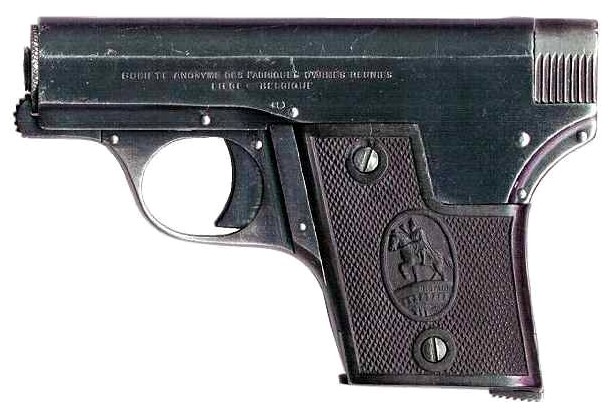Some of the most beautiful work of this craftsman, and many others, are in this book “Liège Gunmakers through their Work. 1800 - 1950”.
For more detail see: LIEGE GUNMAKERS
Albert Simonis
The
patent on this weapon is most likely 41973.
The system, patented by
Albert Simonis,
is particularly ingenious, it is the ejection rod that spins the cylinder !
AD
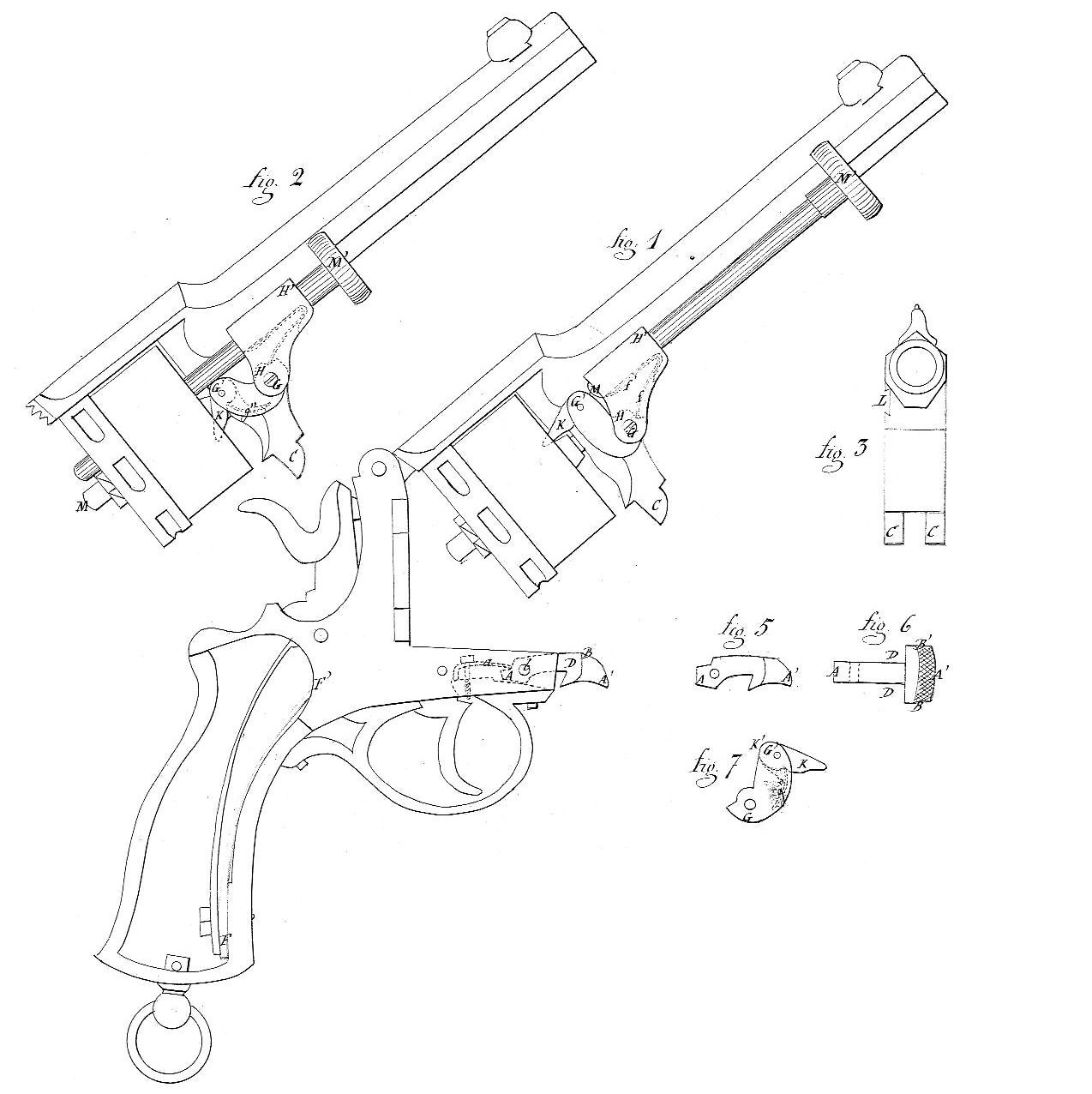
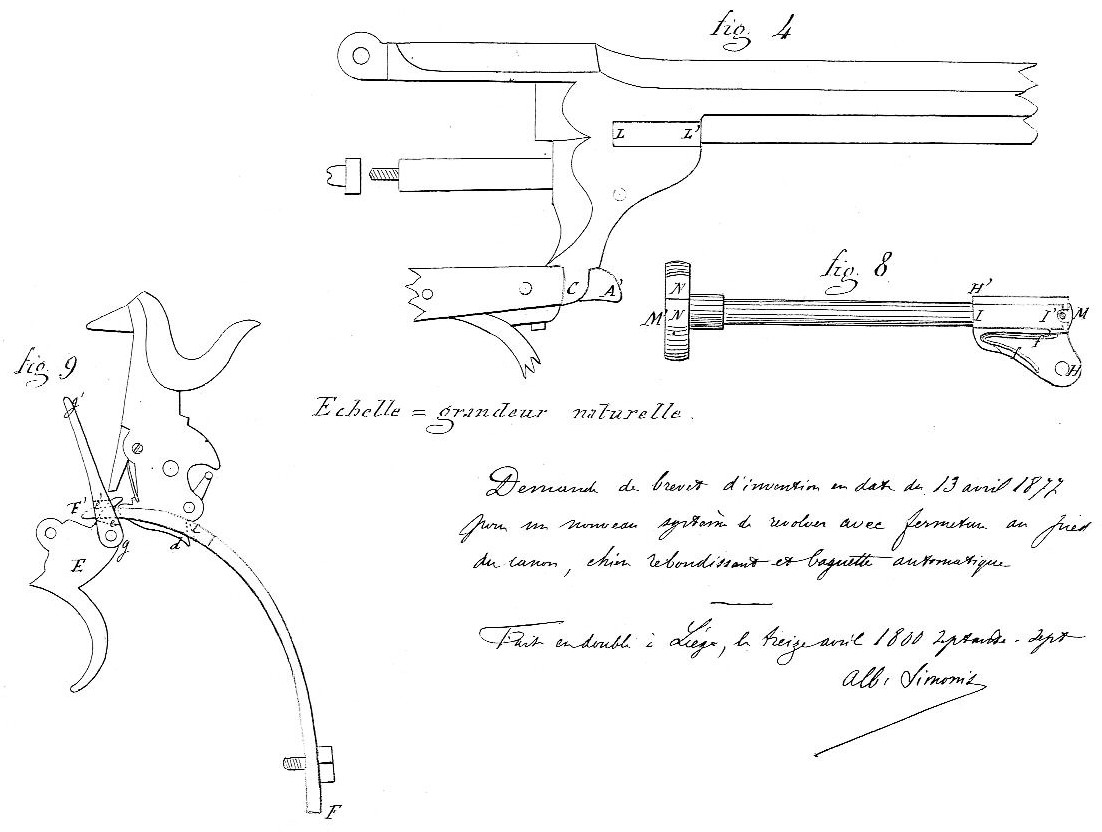
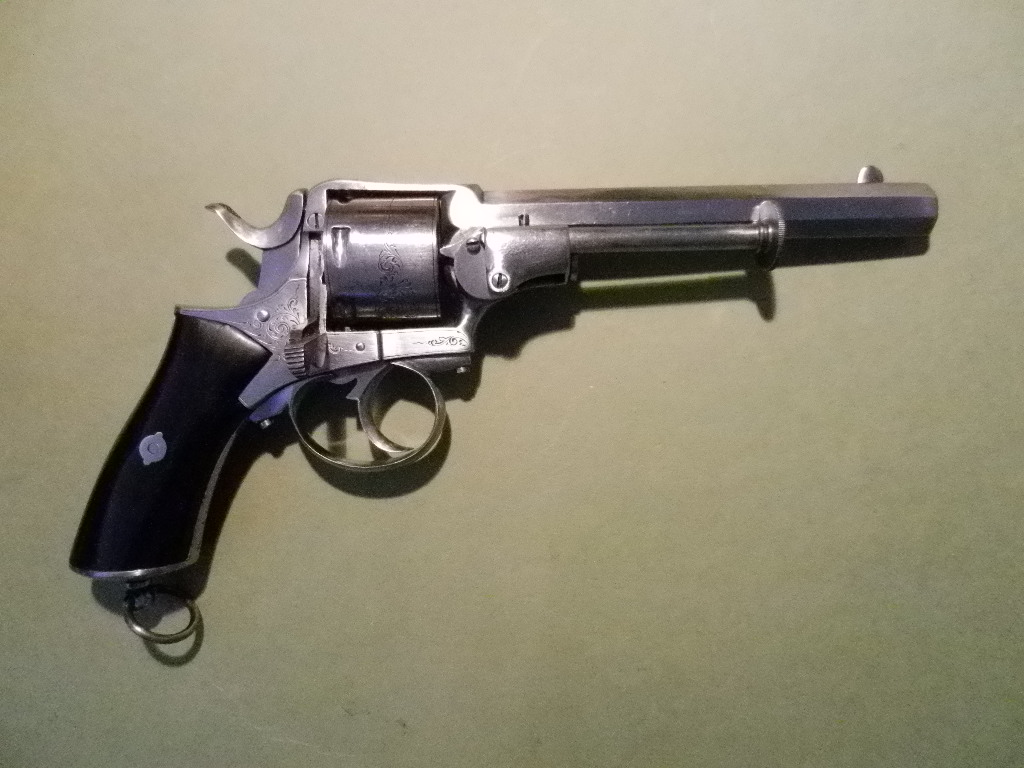
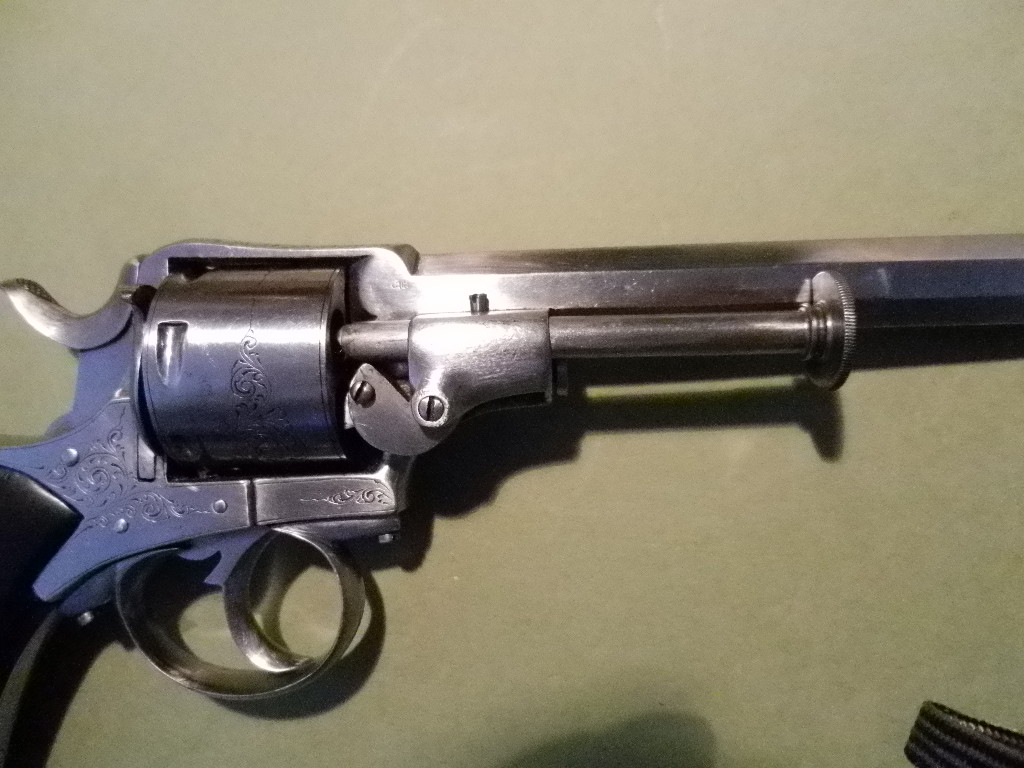
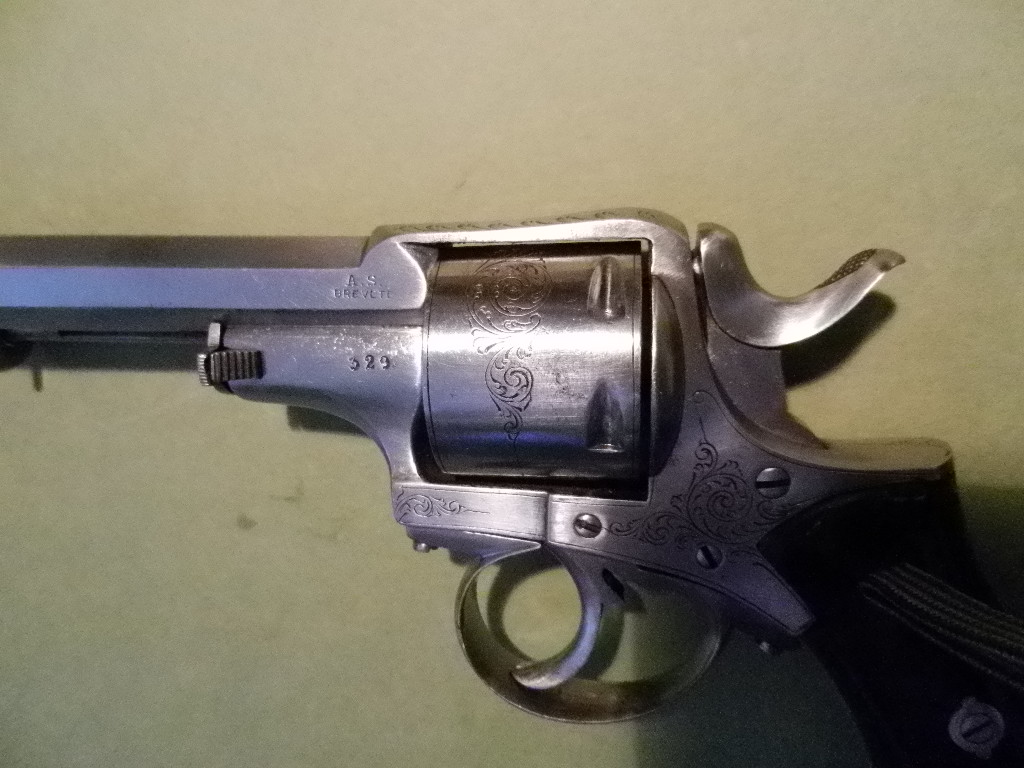
Albert Simonis
Here is a very traditional revolver of type
bull dog (but with ring of cap) of manufacture of Liège (Albert
Simonis), which knew better days.....
Five shots, misses the rod of ejection of the casings. And presumably the
trigger return spring.
Markings
ELG on star in crowned oval: acceptance since 1893
R crowned: rifled bore, since 1894
? under star: not identified fatally....
C crowned: I am astonished to find a letter crowned with what should be
the countermark of a controller, given that one passed in 1877 from crown
countermarks to countermarks under star....however, the revolver is well after
1893 (acceptance stamp) and even 1894 see below.
JG and H under the right plate: undoubtedly marks of foundryman(s)?
British Boxer:
trademark registered by
Albert Simonis,
rue Trappé in Liège, March 24, 1894.
Albert Simonis was enrolled in the Belgian proofhouse from 1873 to 1900.
Between "British" and "Boxer" there is also an inscription, : Jacques
????
Liège : not identified.
GP with the help of HPH
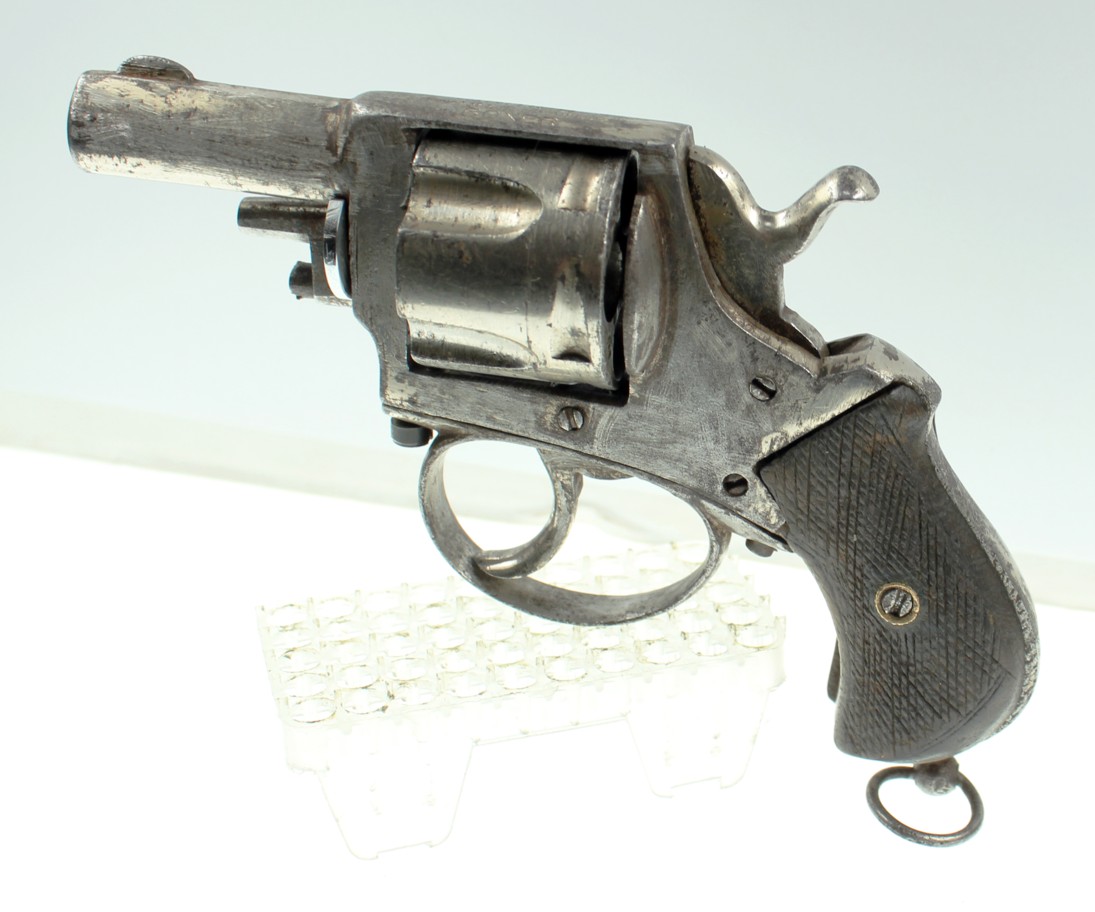
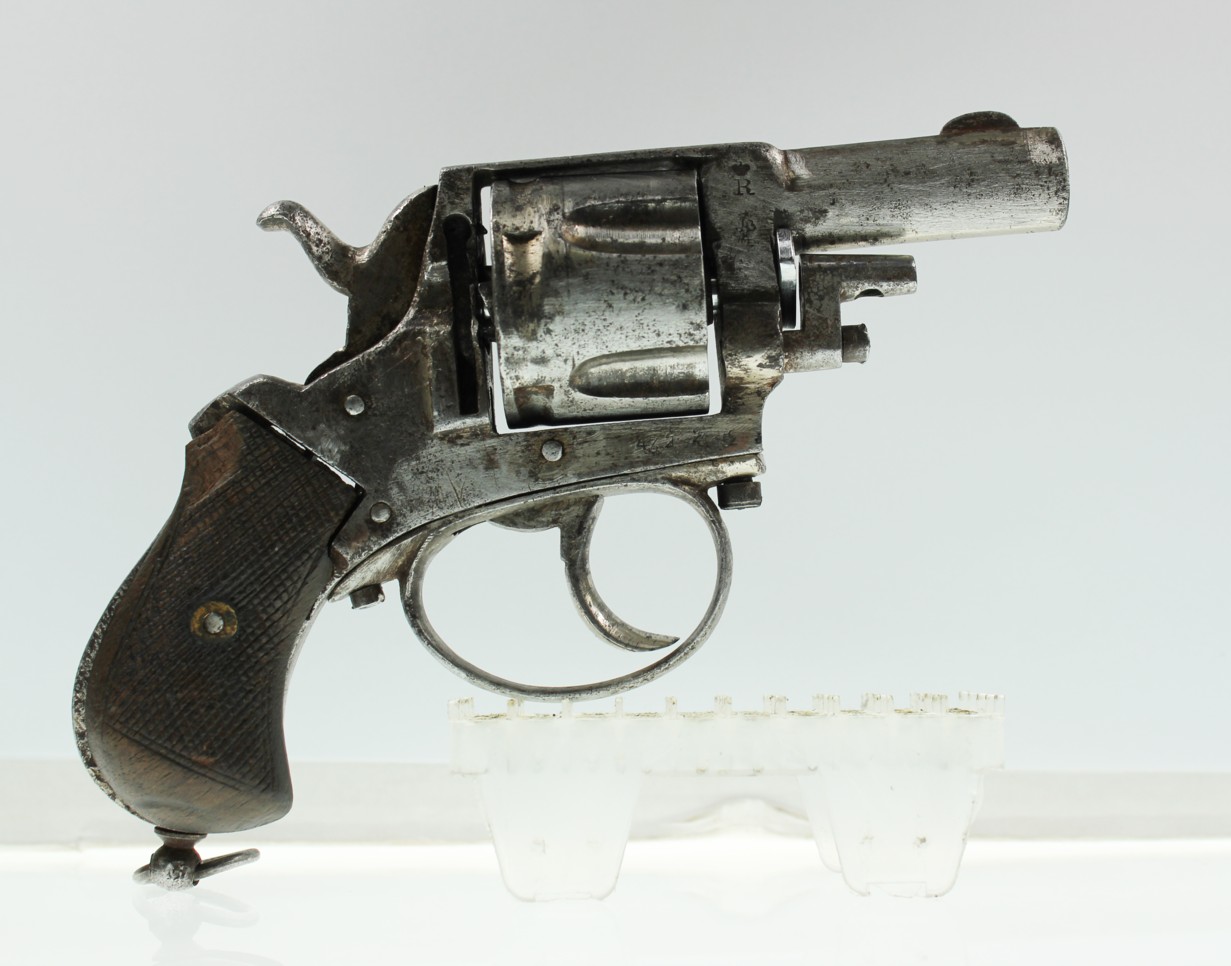
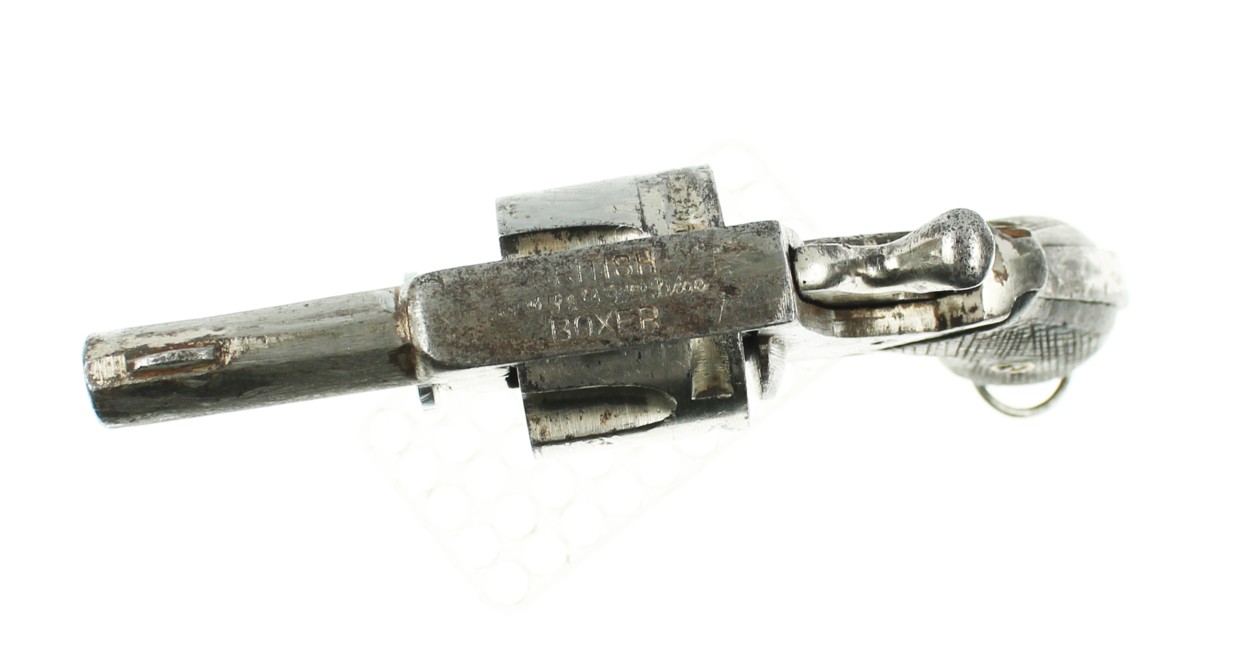
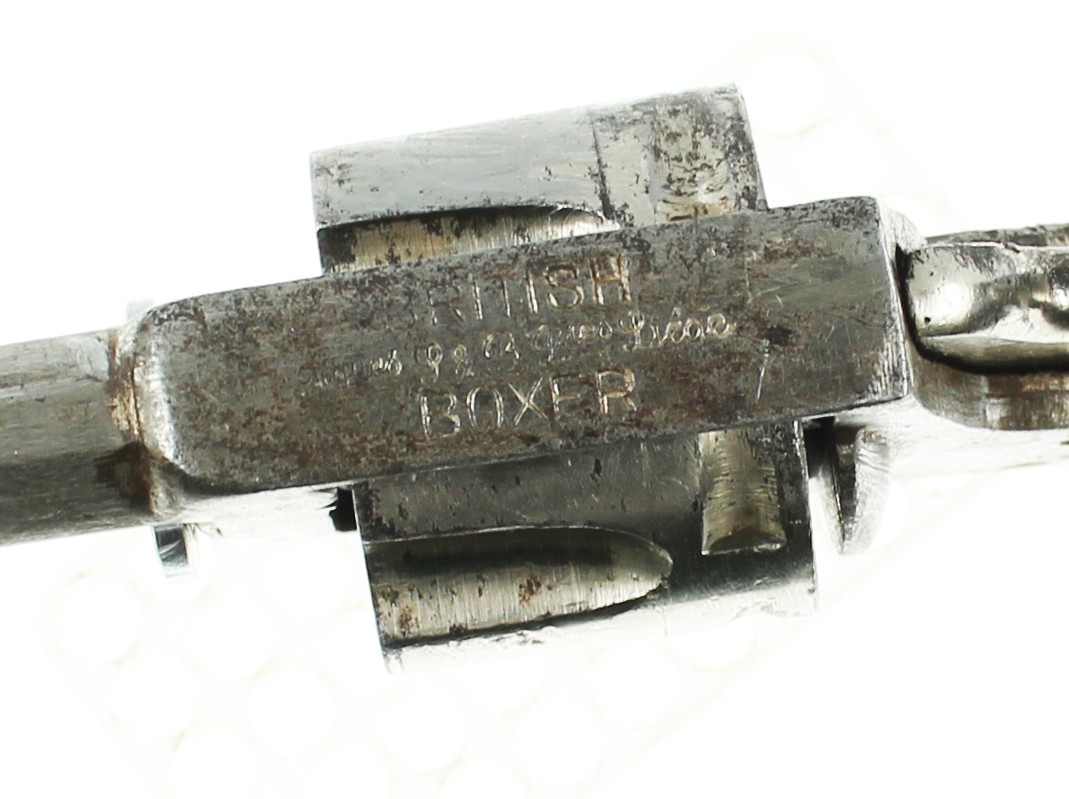
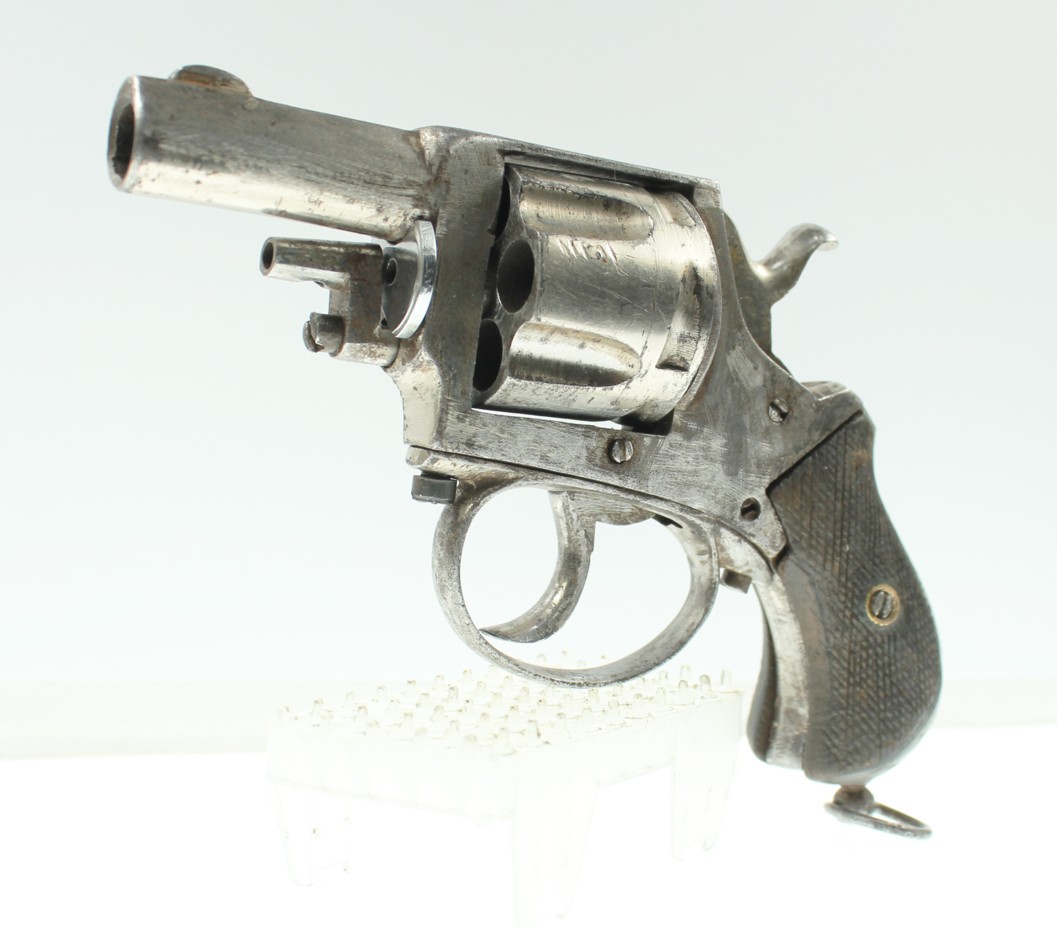
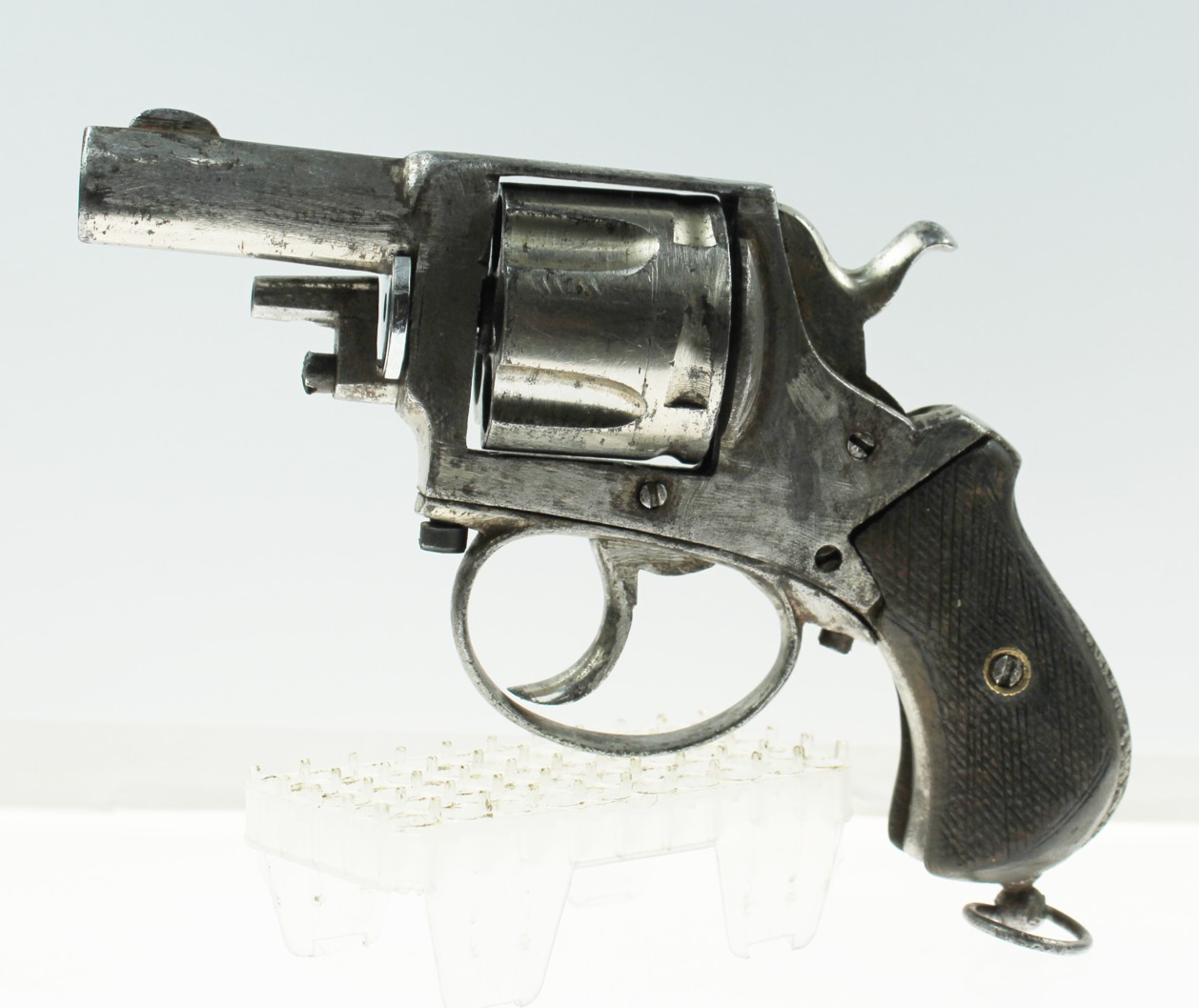
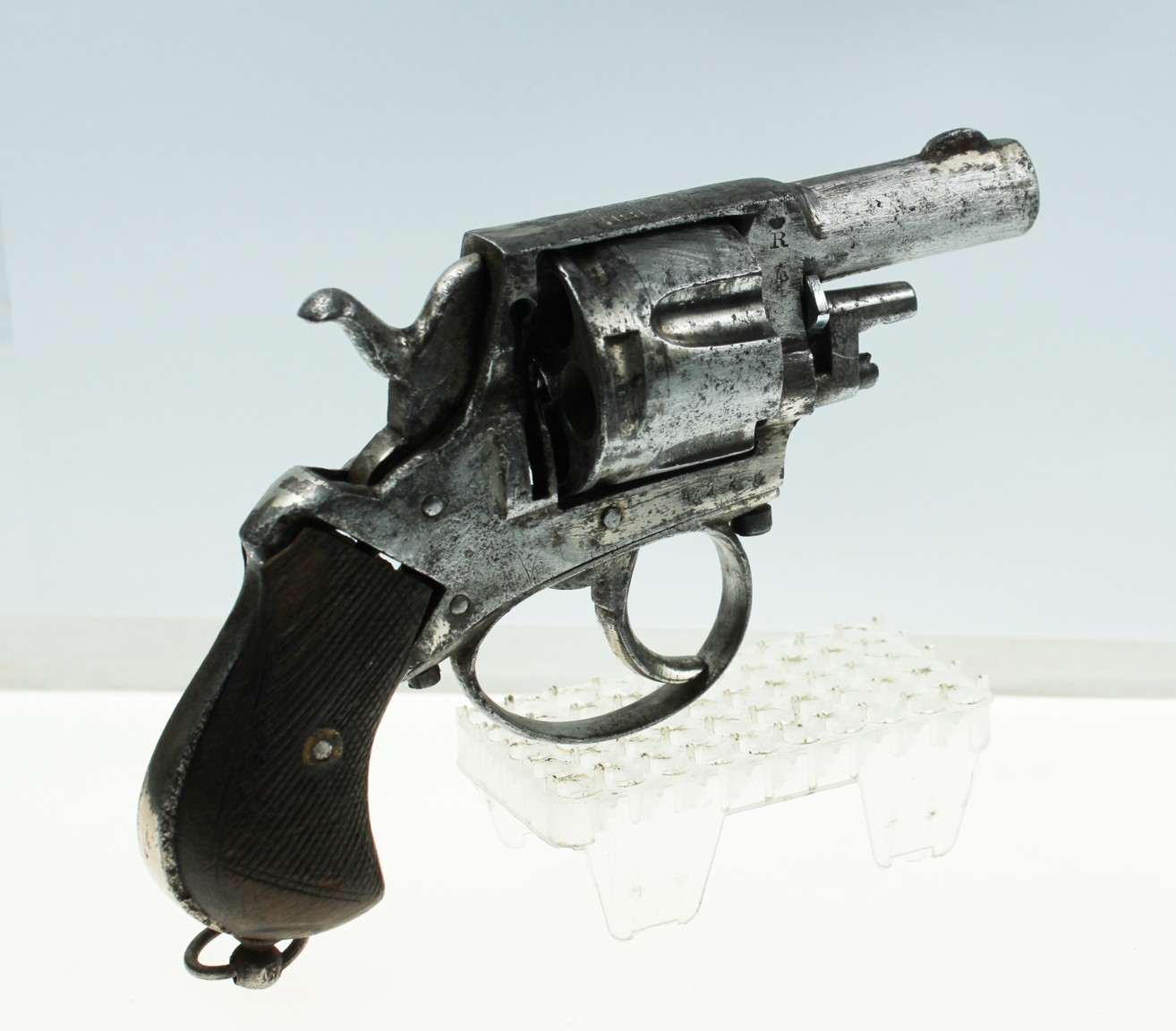
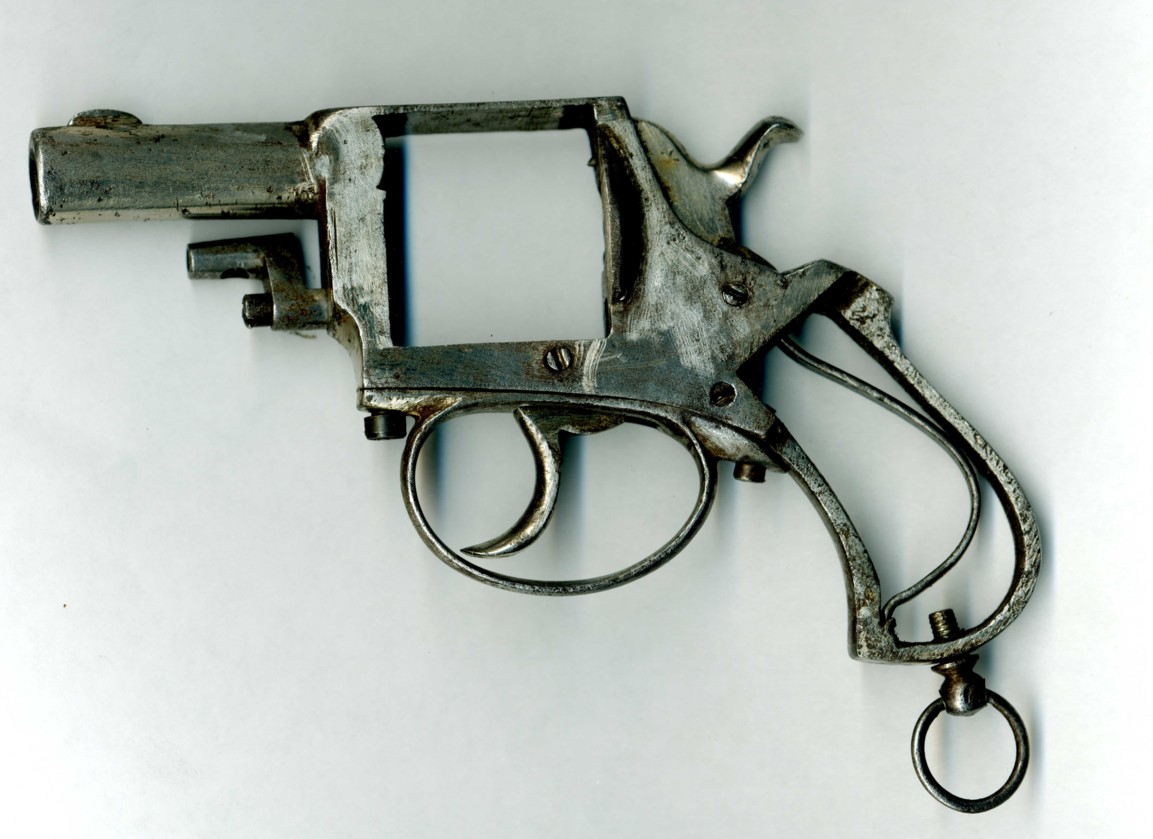
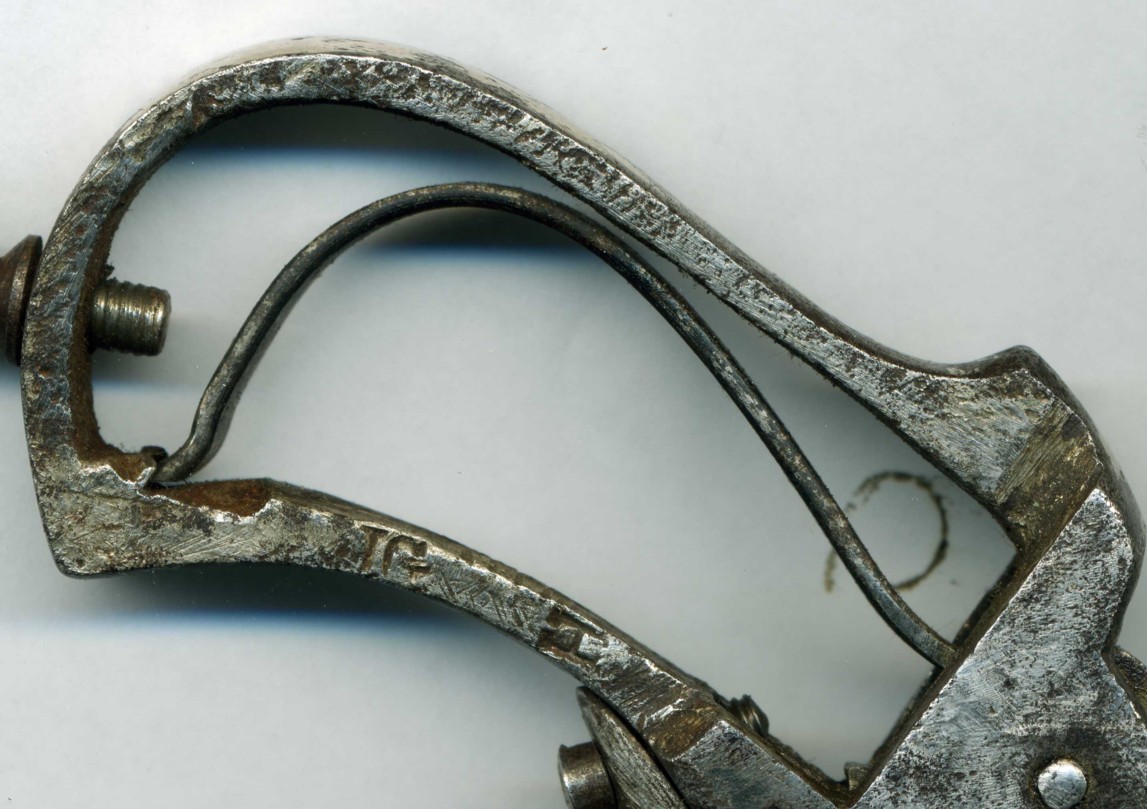
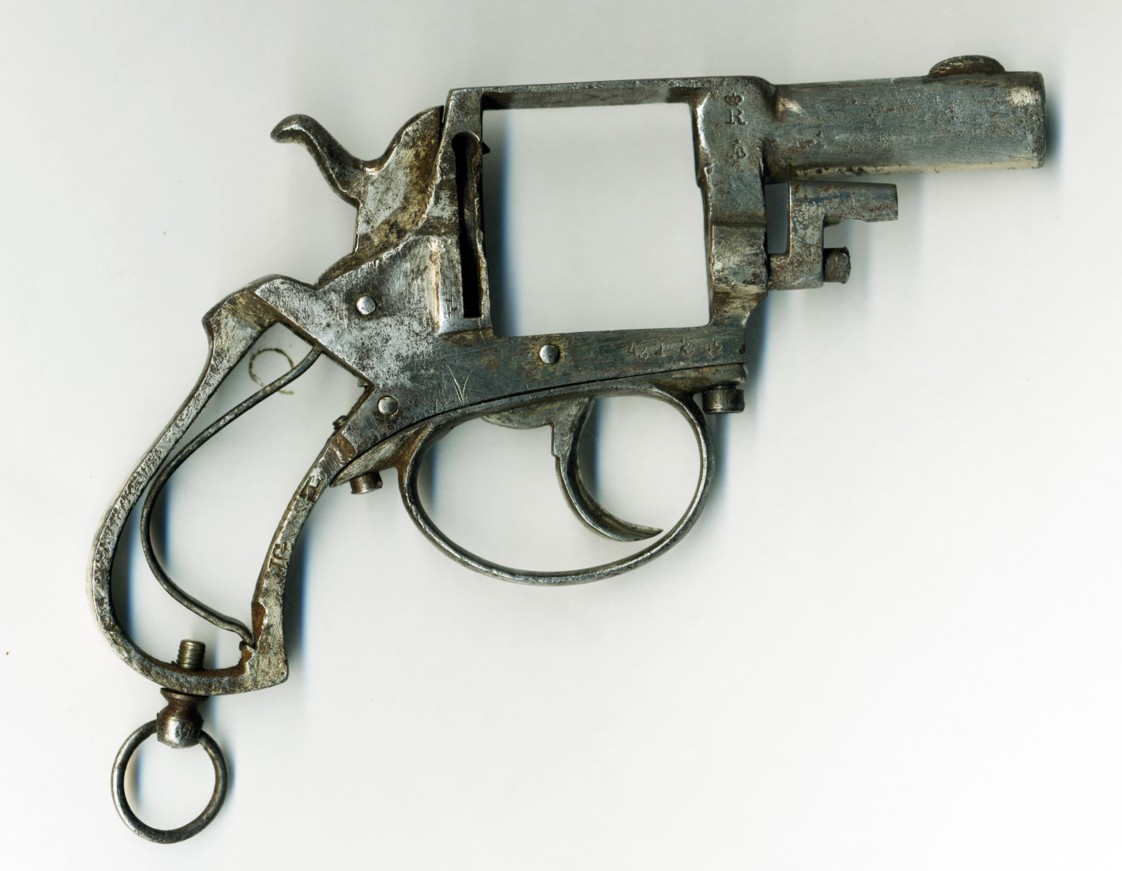
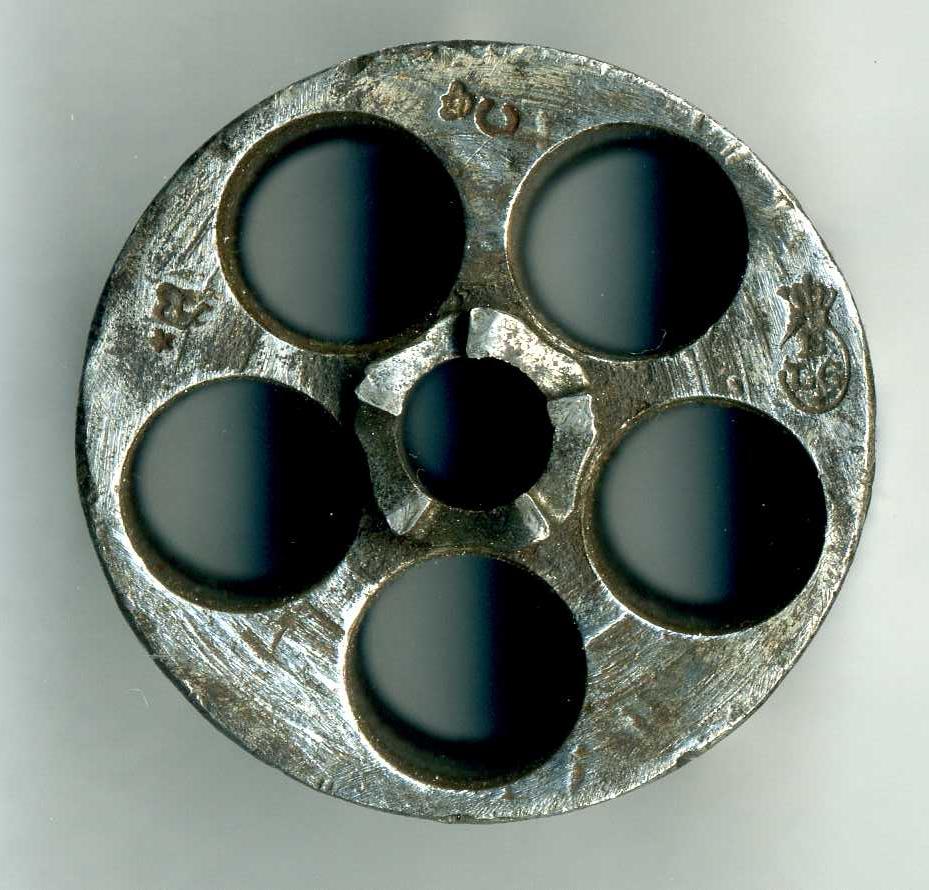
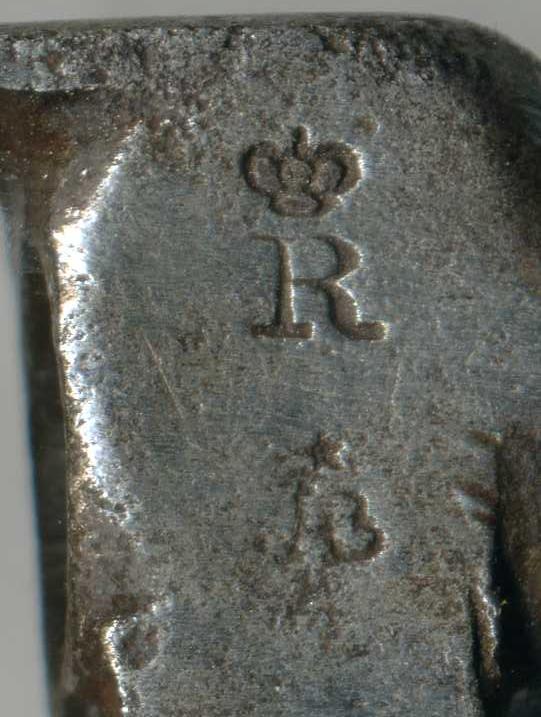
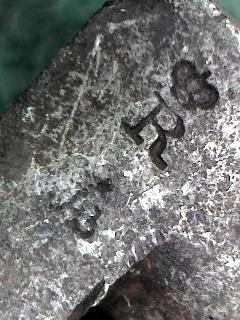
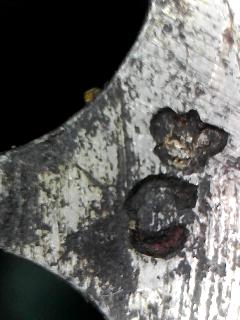
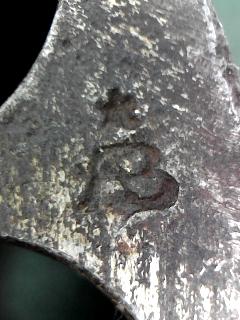
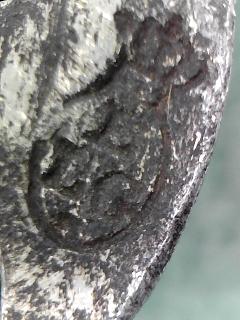
Albert Simonis
The weapon
It is about a revolver with crack “Top break”.
The opening of the weapon is practiced while pushing on the pedal fixed at the left side of the carcass. The tenon of the clamp connecting the two parts of the carcass is thus released making it possible the unit barrel cylinder to downwards swivel on the axis placed in front of the carcass.
The lock is with rebounding hammer.
The rifled barrel is with 8 sides with a front sight in half-moon and a bead dug in the carcass.
The grooved cylinder (ellipses) is equipped with an extractor out of ring.
Is the metal stick equipped with two plates out of wooden (of drowning?) finely squared joined together by a screw and two rivet washers out of brass. It ends in a metal cap with a ring and its screw-pivot.
Punches
The weapon carries the punches of the proofhouse of Liège, namely:
ELG on star in an oval crowned: final acceptance post 1893.
C spangled: countermark of the controller post 1877.
R crowned: rifled bore, of use of 1894 to 1968.
Markings
The weapon is struck initial NS patented pertaining in all logic to the inventor of this system or its improvement.
The problem is that no patent of inventor of this period corresponds to this weapon.
However the patent n° 41692 deposited by Albert Simonis 31 the Mars 1877 corresponds more or less to the weapon presented here.
The technical drawing joint at the present will attest some with sufficiency.
This patent indicates that the patent is granted for a closing applicable to the tilting barrel revolvers.
But which was N.S.? I do not have any answer to give. The patent does not mention any another person whose name starts with N.
The manufacturer
SIMONIS Albert, manufacturer of weapons in Liege street Trappé 19-20 was registered with the proofhouse of Liege of 1873 to 1900.
It deposited of 1876 to 1894, 19 patents.
It also deposited several trademarks as AS with 2 cross rifles - The unique – Constable’s pattern – AS Self extracting revolver improved patend Liège Belgique.
You will notice that the patent goes back to 1877 and that the punches of tests date according to 1893! It acts as any assumption of a late manufacture of another SIMONIS having begun again the patent with its name?? Such transfers of patent were relatively current at the time.
GG
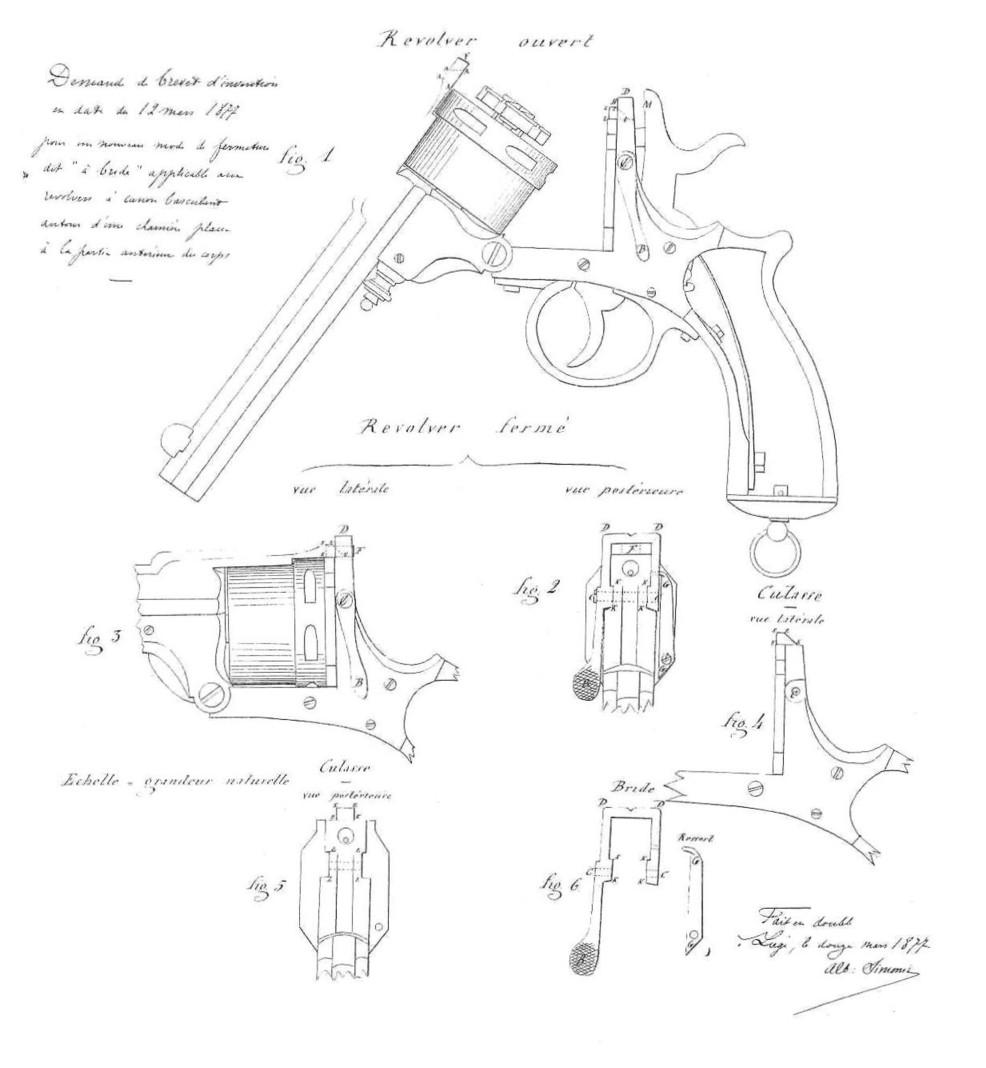
Albert Simonis
The weapon
Traditional revolver of the Lefaucheux type of Liège manufacture.
Addition equips with a metal coil reported on the framework and the barrel to rigidify the weapon is posterior. It is the arms manufacturer of Brussels A. Janssen who patented this improvement in 1859 (patent n° 7362).
A pinfire revolver thus (9 mm gauge).
The smooth cylinder is with 6 rooms notched to deliver passage to the pins.
The barrel is round and should carry 6 stripes?
The loading is practiced by a right side door dropping thanks to the action of an internal spring.
Unloading is practiced “with the rod”, which slide in a guide integrated into the console and maintained by a small leaf spring.
The stick consist of two plates out of squared wooden (Walnut?) maintained by a screw and two rivet washers with ears. It ends in a ring of cap and its screw-pivot.
Punches
The weapon carries the lawful punches of the proofhouse of Liege, namely:
ELG on star in a vertical oval: final acceptance of use of 1846 to 1893.
D spangled: countermark of the controller post 1877.
Period of manufacture: between 1877 and 1893.
Marks
8869: it is about a job number.
Spangled AS: it could acts of a trademark of SIMONIS Albert, manufacturer of weapons of Liège who was registered with the proofhouse of Liege of 1873 to 1900. It was installed in LIEGE street Trappé, 18-20. From 1876 to 1894, it deposit 19 patents of which in particular a system of band applicable to the revolvers of all gauges which could correspond to the present weapon?
MV: mark unknown, which most probably corresponds to a subcontractor (arms manufacturer in residence.
GG
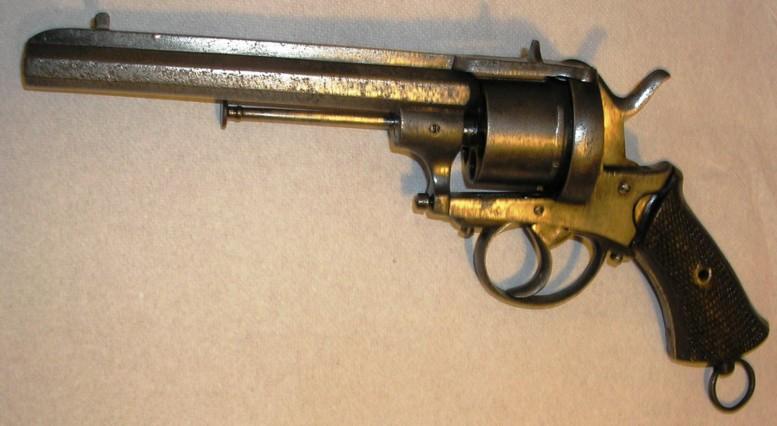
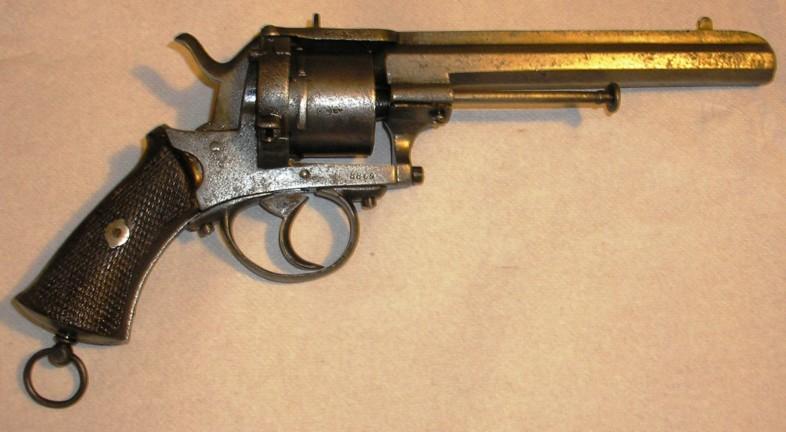
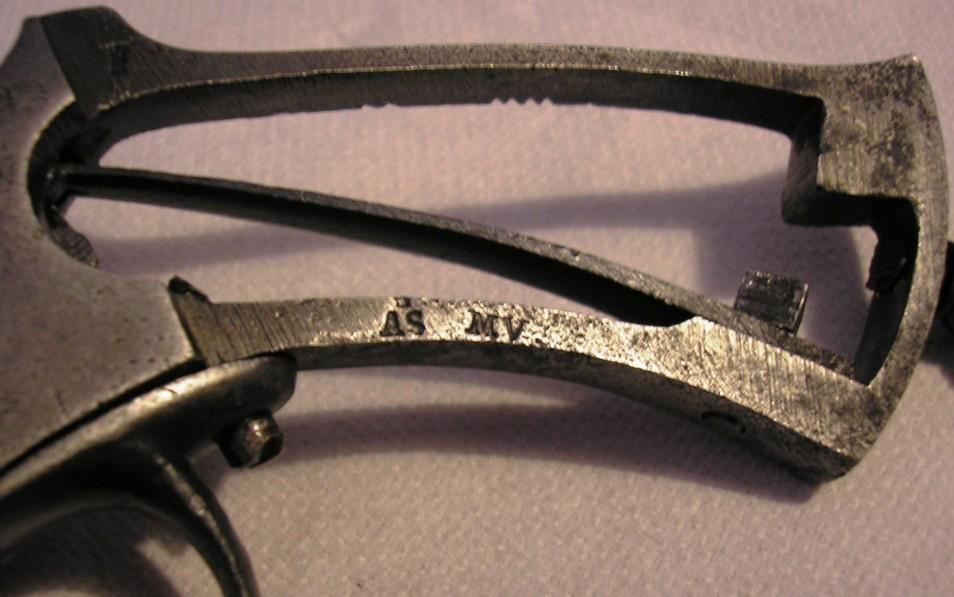
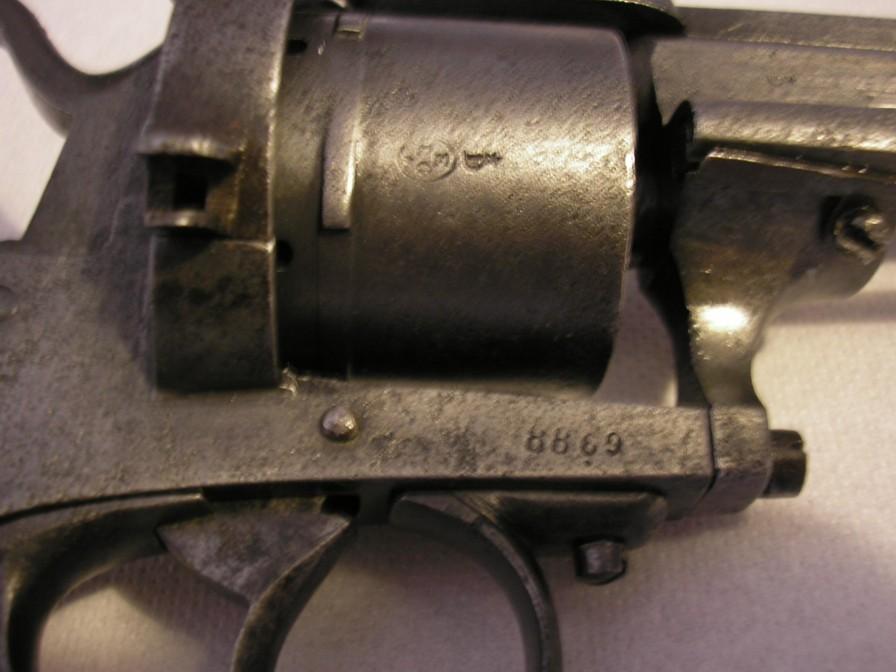
Simonis
The mark taken again on the plates of Dictator, is the equestrian statue of CHARLEMAGNE (of which the statue is still visible in LIEGE boulevard of Avroy and is identical to the representation).
This mark was deposited by Albert SIMONIS (arms manufacturer inhabitant of Liège) the 24.07.1908.
This arms manufacturer linked himself in 1901 with the arms manufacturers inhabitant of Liège BERTRAND, Antoine & wire - RIGA & Co - PIRLOT & FRESART and a part of PIRLOT brothers to found the FABRIQUE D'ARMES REUNIES S.A.
This company continued until 1920 before it being even taken again by the FABRIQUE D'ARMES UNIES 22 street Trappé in LIEGE.
This company had as a mark THE CENTAUR!!
